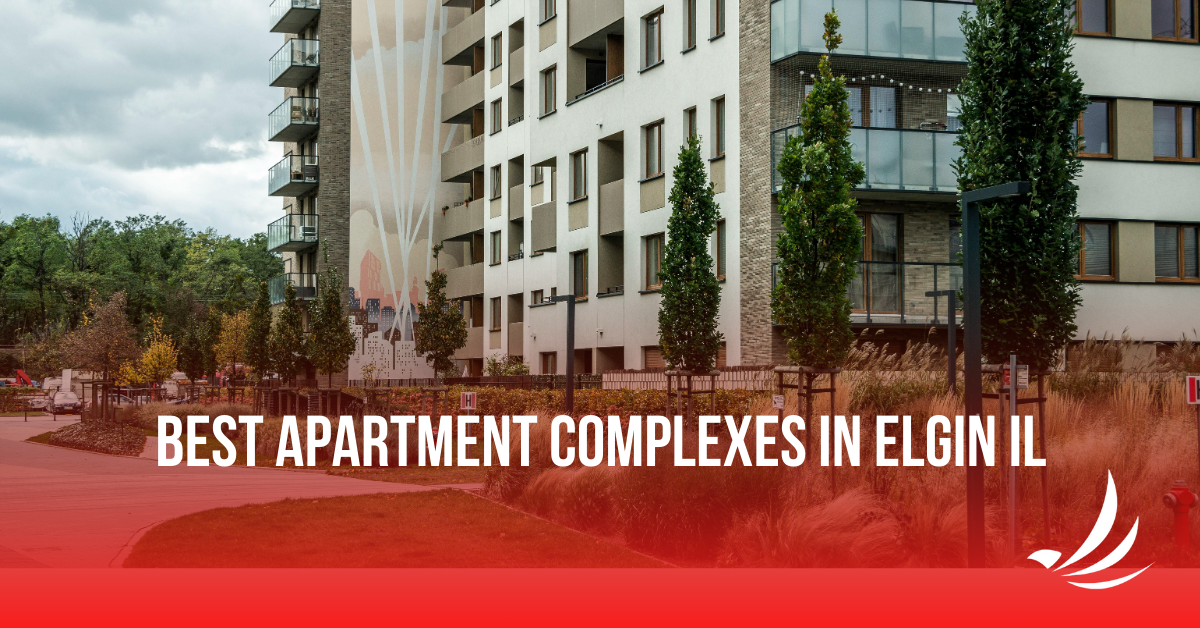Pros and Cons of Living in South Elgin, IL
Thinking about moving to South Elgin, IL? This charming suburb, located about 40 miles northwest of Chicago, has a lot to offer. Known for its peaceful environment, excellent schools, and a strong sense of community, this city is a place where many families and individuals have found a happy home.
But, like any location, it has its good points and not-so-good points. So if you want to know more about the pros and cons of living in South Elgin, IL, this article will give you all the important information you need before you move here.
Pros of Living in South Elgin
Excellent Schools
One of the standout features of South Elgin is its excellent educational system. Since it’s a part of the second-largest school district, you can expect high-quality education and a wide range of programs to meet your academic needs. There are various institutions such as Fox Meadow Elementary School, South Elgin High School, and Kenyon Woods Middle School that you can choose depending on your grade.
If you have kids, Fox Meadow Elementary School is well-known for serving students from kindergarten through sixth grade. If you need higher education, Elgin Community College (ECC) is a nearby institution that offers a wide range of associate degree programs, certificate programs, and continuing education courses.
Safe and Family-Friendly
South Elgin is renowned for its safe and family-friendly environment, which makes it an ideal place to raise kids. The South Elgin Police Department is highly regarded for its proactive community policing efforts and swift response times, which is why the crime rate in this city is 74% lower than the national average.
Affordable Housing
The housing market of South Elgin is relatively affordable as compared to other Chicago suburbs. Whether you are looking for single-family homes, townhouses, condos, or apartments, South Elgin makes it possible for people from various financial backgrounds to find a place they can call home. There are also housing program providers like Elgin Housing Authority, which can help you get affordable accommodation. As per Zillow, the average home value is $341,816 while rent can be $2000-$4000 depending on location, size, and quality.
Amazing Recreational Opportunities
From scenic parks and nature trails to engaging community centers and sports facilities, you will find many recreational areas in South Elgin. The SEBA Park is perfect for families as it features walking trails, a playground, picnic areas, and fishing spots. If you want to visit a peaceful location, Jon J. Duerr Forest Preserve would be a good option. Here you can enjoy lush woodlands, meandering trails, and calming views of the Fox River. The good thing is that it also has picnic shelters and open spaces for gatherings.
For community activities and sports, Lion Park is another good spot. It gives you access to baseball and softball fields, tennis courts, and a skate park and also hosts various events and fundraisers throughout the year.
Proximity to Chicago
South Elgin is only about 40 miles away from one of the nation's largest cities, which brings a variety of benefits that enhance the quality of your life. Whether you're in finance, healthcare, technology, or the arts, this proximity gives you access to job opportunities in diverse industries. Along with this, you can easily enjoy world-class museums like the Art Institute of Chicago, the Field Museum, and the Museum of Science and Industry.
Since Chicago is a hub of major league action, residents can catch games featuring the Chicago Cubs, White Sox, Bears, Bulls, and Blackhawks. In other words, you can attend the best colleges, and get top-quality healthcare facilities and modern amenities while enjoying a quieter suburban lifestyle. If you want to move, you can search for moving services in South Elgin and hire a professional company to make moving more convenient.
Cons of Living in South Elgin
Limited Public Transportation
One of the significant drawbacks of living in South Elgin is the limited public transportation options. While urban areas like Chicago have an extensive public transportation system, you will have to rely on personal vehicles for your daily commute and errands here. This means you will need a car if your work requires frequent travel, which can be a disadvantage for those who prefer not to drive or cannot afford a vehicle. Along with this, using more personal vehicles increases traffic congestion and can lead to longer travel times and frustration for drivers.
Harsh Winters
Winter in this city can be quite cold, with temperatures often dropping below freezing from late November through early March. This can be difficult to adapt for people who have always lived in warm areas. South Elgin is also popular for its heavy snowfall during January and February. The area sees around 30 inches of snow each winter and snowstorms can sometimes bring several inches of snow at once, which can create hazardous driving conditions and increase the need for regular snow removal from driveways, sidewalks, and streets.
Lack of Nightlife
South Elgin is a quieter suburb with a peaceful environment, which is why it doesn’t have as many bars, clubs, and late-night dining options compared to larger cities. You can find a few local establishments to enjoy a drink or a meal in the evening, but the variety and excitement of nightlife are limited. This can be a downside for those who enjoy a lively social atmosphere or like to explore different entertainment venues regularly. If you want to experience dynamic nightlife, you will often need to travel to nearby cities such as Elgin or St. Charles, or even make the trip to Chicago.
Growing Population
South Elgin is growing rapidly, which has both positive and negative impacts. Although you can get various employment opportunities, it can cause certain challenges like high traffic congestion. Apart from this, the growing population can strain the capacity of local schools. While the school district may eventually expand facilities to accommodate the influx of students, the interim period can be challenging for both students and educators. It can also put pressure on public services as they may face challenges in keeping up with the demands of a growing community.
Limited Shopping and Dining
South Elgin features various local shops that provide necessities and unique items. However, it lacks the presence of major retail chains and large shopping malls. So if you want to get exclusive shopping experiences, you will need to travel outside the village to get access to big-box stores and specialty shops. Coming to the dining scene, South Elgin has some great local eateries, family-owned restaurants, fast-food outlets, and casual dining establishments but you won’t find many fine dining, international cuisine, and trendy food spots.
Conclusion
The welcoming and family-friendly environment of South Elgin makes it an ideal place for both families and working professionals. It comes with affordable housing and amazing recreational activities and the proximity to Chicago gives you access to all the necessary amenities. However, people who are planning to move should also consider its limited public transportation and extreme winter conditions.
If you value a strong sense of community and want a quieter place, South Elgin can be a great place for you. You can search for a moving company in South Elgin, IL to let professionals help you move quickly and safely.




